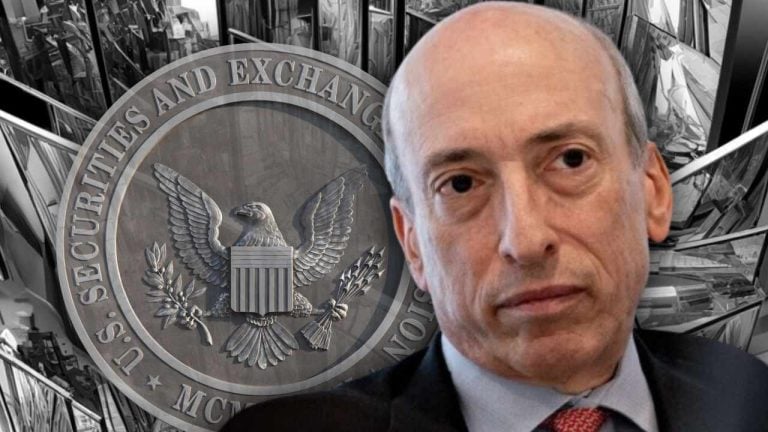From the NY Times to WaPo, the media is fawning over Bankman-Fried

Mainstream media outlets just can’t seem to stop drooling over the disgraced FTX founder.
Nearly three weeks have passed since FTX founder Sam “SBF” Bankman-Fried announced that his exchange was facing a deep liquidity crisis, was unable to find a last-minute bailout, and was forced to file for Chapter 11 bankruptcy. The insolvency impacted millions of investors, leaving many portfolios completely wiped out.
Bankman-Fried has openly admitted that FTX loaned customer deposits to Alameda Research, FTX’s sister hedge fund, although he has characterized this as a mistake that was caused by “confusing internal labeling.” FTX’s terms of service explicitly state that customer funds will never be lent to other financial institutions or used by FTX for proprietary trades. Sam publicly stated in a now-deleted tweet, “We don’t invest client assets (even in treasuries).”
The broader crypto markets have bled red in response, and other industry stalwarts now face insolvency risk with the contagion spreading to Genesis, Grayscale and many other firms that held assets on FTX or were owed money by Alameda Research.
Related: The fall of FTX and Sam Bankman-Fried might be good for crypto
FTX’s new turnaround CEO John Ray III stated in court documents, “Never in my career have I seen such a complete failure of corporate controls and such a complete absence of trustworthy financial information as occurred here.” In the same court documents, FTX admitted that it may have more than 1 million creditors, the majority of whom were users who lost money when SBF took it and loaned it to Alameda Research for its proprietary trading business.
In the wake of Bankman-Fried’s actions, it’s deeply appalling that mainstream media outlets like The Wall Street Journal, The New York Times, The Washington Post, Forbes, and many others have covered the FTX scandal and ensuing meltdown with kiddy gloves, refusing to call out Bankman-Fried and his inner circle for using and abusing customer funds.
Cancel Culture has wiped out a lot of people yet the @WSJ and @nytimes still trying to rehab and protect the imagine of Sam Bankman-Fried. So many young people looking to make their way in life have been wiped out.
The “elites” protect their own even under a microscope. pic.twitter.com/ZaUjLi7TTz
— Charles V Payne (@cvpayne) November 24, 2022
Instead, these publications have largely framed the FTX disaster as a series of honest mistakes by overly ambitious and quirky entrepreneurs that adhere to the effective altruism movement. Bankman-Fried and insiders like Caroline Ellison, former CEO of Alameda Research, were simply trying to do good for the world and will no longer be able to see their benevolent aspirations through.
The Wall Street Journal, for instance, published an article focused primarily on Bankman-Fried’s charitable aspirations — while lightly glossing over the fact that he misused customer funds:
Bankman-Fried has said his law-professor parents instilled in him an interest in utilitarianism, the philosophy of trying to do the greatest good for the greatest number of people. He said he started putting those ideals into practice while majoring in physics at MIT. Concerned with the suffering of animals on factory farms, he said, he stopped eating meat.
The WSJ also delved into the FTX Foundation and its Future Fund (a nonprofit arm of FTX), discussing how many good causes are no longer able to collect on promised grants:
Related: Will SBF face consequences for mismanaging FTX? Don’t count on it
“The collapse of Mr. Bankman-Fried’s empire has reverberated well beyond its Bahamas base, through the halls of academia and pioneering laboratories around the world. Several grant recipients […] were still owed funds when FTX failed, according to people familiar with the matter.”
Not once did the WSJ condemn Bankman-Fried for his actions. While it discussed multi-million dollar losses that charitable causes have suffered, it failed to mention the multiple billions that were stolen from FTX customers who were promised their deposits were safe.
Similarly, The Washington Post reported that Sam Bankman-Fried and his brother Gabe wanted to make a difference after the global pandemic rocked the world in 2020:
A Washington Post review of lobbying disclosures, federal records and other sources found that the brothers and their network have spent at least $70 million since October 2021 on research projects, campaign donations and other initiatives intended to improve biosecurity and prevent the next pandemic.
The publication omitted the fact that charitable donations were, in fact, funded by money SBF obtained from customers. The article further lamented that the brothers will no longer be able to fund their pandemic-related philanthropic efforts:
But the sudden collapse of FTX, which filed for bankruptcy last Friday after reports that customer funds were being used to prop up a sister trading firm, has sparked a financial contagion expected to doom the brothers’ pandemic-prevention agenda.
Unfortunately, the impact of FTX collapsing goes far beyond negatively impacting pandemic-prevention funding. Millions of people lost their money by trusting FTX to custody their crypto. Companies using FTX to hold their corporate treasuries are now going under. Hedge funds, venture capitals, and centralized finance platforms have all been severely crippled, with some investors that have otherwise outperformed the market now facing 50% losses because of the embezzling of their funds.
I can’t believe mainstream media is still running stories about Sam Bankman-Fried without a single mention of his criminality.
This is a con man who perpetrated a historic fraud. He stole billions of dollars from unsuspecting victims. How is that not the lead of every story??
— Jake Chervinsky (@jchervinsky) November 27, 2022
Perhaps the most egregious reports have come from The New York Times. In one widely criticized puff piece, the author painted a picture of an ambitious but overextended entrepreneur who made mistakes but did so legally. With a little bit more oversight or perhaps a larger team, they advised, these costly mistakes may have been avoided. They even described SBF as a philanthropist who let his charitable ambitions get too large:
Even as he kept hiring down, Mr. Bankman-Fried built an ambitious philanthropic operation, invested in dozens of other crypto companies, bought stock in the trading firm Robinhood, donated to political campaigns, gave media interviews and offered Elon Musk billions of dollars to help finance the mogul’s Twitter takeover. Mr. Bankman-Fried said he wished ‘we’d bitten off a lot less.’
The downright offensive reporting painted the embattled ex-CEO as simply being too busy and overworked to properly monitor what was going on in his companies.
FTX and Alameda Research are described as closely linked. However, they are not described as related parties that should have clear restrictions when doing business with one another. In no world was it appropriate to commingle funds between the two parties when FTX’s assets were primarily customer funds. Instead, the article explained Bankman-Fried’s defense of the muddied relationship by pointing out that Alameda is a crucial market maker and liquidity provider to FTX.
Related: My story of telling the SEC ‘I told you so’ on FTX
In a follow-up post, the NYT explored SBF’s political and charitable contributions in depth, describing the now-shamed entrepreneur as the Democratic Party’s second-largest donor behind George Soros, and depicting his broad influence on politics and regulation:
A network of political action committees, nonprofits and consulting firms funded by FTX or its executives worked to court politicians, regulators and others in the policy orbit, with the goal of making Mr. Bankman-Fried the authoritative voice of crypto, while also shaping regulation for the industry and other causes, according to interviews, email exchanges and an encrypted group chat viewed by The New York Times.
Amid the discussion of his numerous donations, the article never once posited where Bankman-Fried’s generous funding came from. There is no mention that FTX and Alameda are now bankrupt, and that many lives are ruined. Funds that were stolen from users to prop up FTX’s equity value or FTT’s price that are then used for political and charitable donations should be clawed back. Put simply, the money was not Bankman-Fried’s to give.
Forbes wrote a similar puff piece on the other antagonist in the FTX downfall and former CEO of Alameda Research, Caroline Ellison. It led with effusive compliments for the now-fired executive:
Alameda Research CEO Caroline Ellison is a math whiz who loves Harry Potter, fringe political philosophy and taking big risks. She is also one of the supporting players in Sam Bankman-Fried’s FTX catastrophe.
The article went on to profile her ascension from star student at Stanford to Alameda Research, where she eventually took the reins at the proprietary trading firm. It discussed her penchant for math, polyamory and, of course, effective altruism. It also suggested she may be the scapegoat for the downfall of Alameda:
Many of the people who have flocked to Ellison’s defense gather on Urbit, a peer-to-peer platform […], one of her online supporters told Forbes. They think Ellison was set up to be the fall person, and claim that former co-CEO Sam Trabucco, who they derisively call ‘Sam Tabasco,’ is behind Alameda’s implosion.
Forbes hinted that Ellison could flee Hong Kong for Dubai, but did little in assigning accountability to the former CEO. It blatantly omitted the fact that she was at the helm of disastrous trading and risk management at Alameda, including her involvement in transferring FTX customer funds to Alameda to backstop her trading losses.
The mainstream media should be accountable to higher standards of journalism than we’ve seen in this coverage. Too many outlets have compromised the veracity of their reporting, perhaps because their reporters share Bankman-Fried’s left-leaning politics.
It’s clear Bankman-Fried’s influence reaches far beyond the crypto industry and extends into the mainstream media. We need stronger citizen journalism to get the full truth out, and we must collectively make sure that the former billionaire is held accountable for his actions.
This article is for general information purposes and is not intended to be and should not be taken as legal or investment advice. The views, thoughts, and opinions expressed here are the author’s alone and do not necessarily reflect or represent the views and opinions of Cointelegraph.









